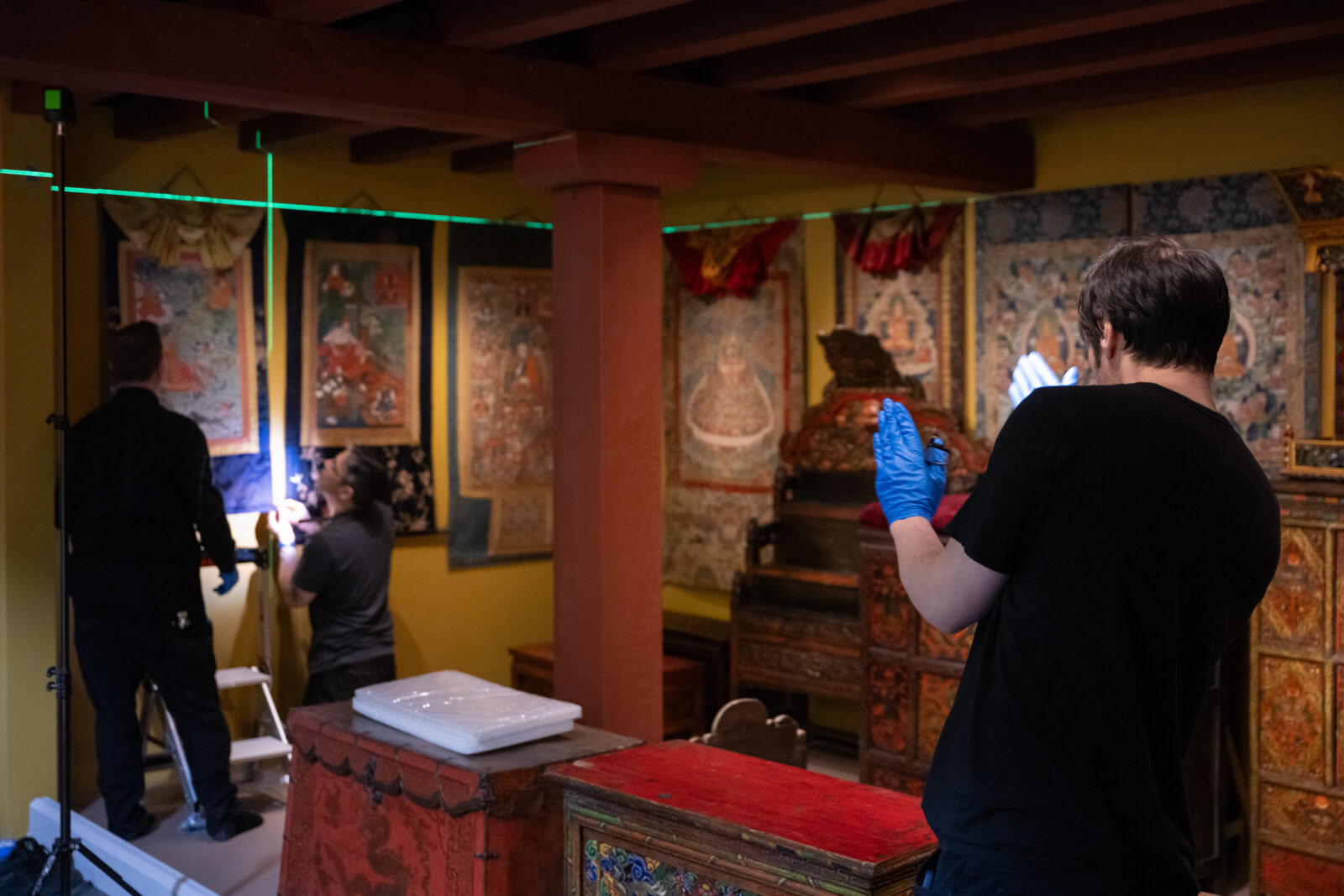
Photo by Filip Wolak

Photo by Filip Wolak
The Rubin Museum Tibetan Buddhist Shrine Room has found a new home in the Brooklyn Museum’s Arts of Asia galleries. Over 100 art objects plus structural elements from the Rubin installation, including beams and doors, were painstakingly relocated to the Brooklyn Museum and reassembled in the new space. This monumental effort was a special collaboration involving the staff of both museums, representing a dynamic multiyear partnership between the two institutions.
Read on for reflections from some of the people who played a role in the new Shrine Room, plus a behind-the-scenes glimpse at the installation process.
It was really heartwarming to work with the Brooklyn Museum team to install the objects. They were curious to learn about the objects as well as the living practices that engage the paintings, sculpture, ritual objects, and decorative items. Each day as the installation progressed, I had this sense of wonder, seeing how the combined efforts of both the Rubin and the Brooklyn Museum teams working together was gradually shaping this new space. The most rewarding part has been seeing so many visitors of all ages and walks of life in the Rubin Museum Tibetan Buddhist Shrine Room, especially Tibetan, Sherpa, and Nepali visitors from the diaspora taking center stage with their presence.
— Elena Pakhoutova, Senior Curator, Rubin Museum of Himalayan Art
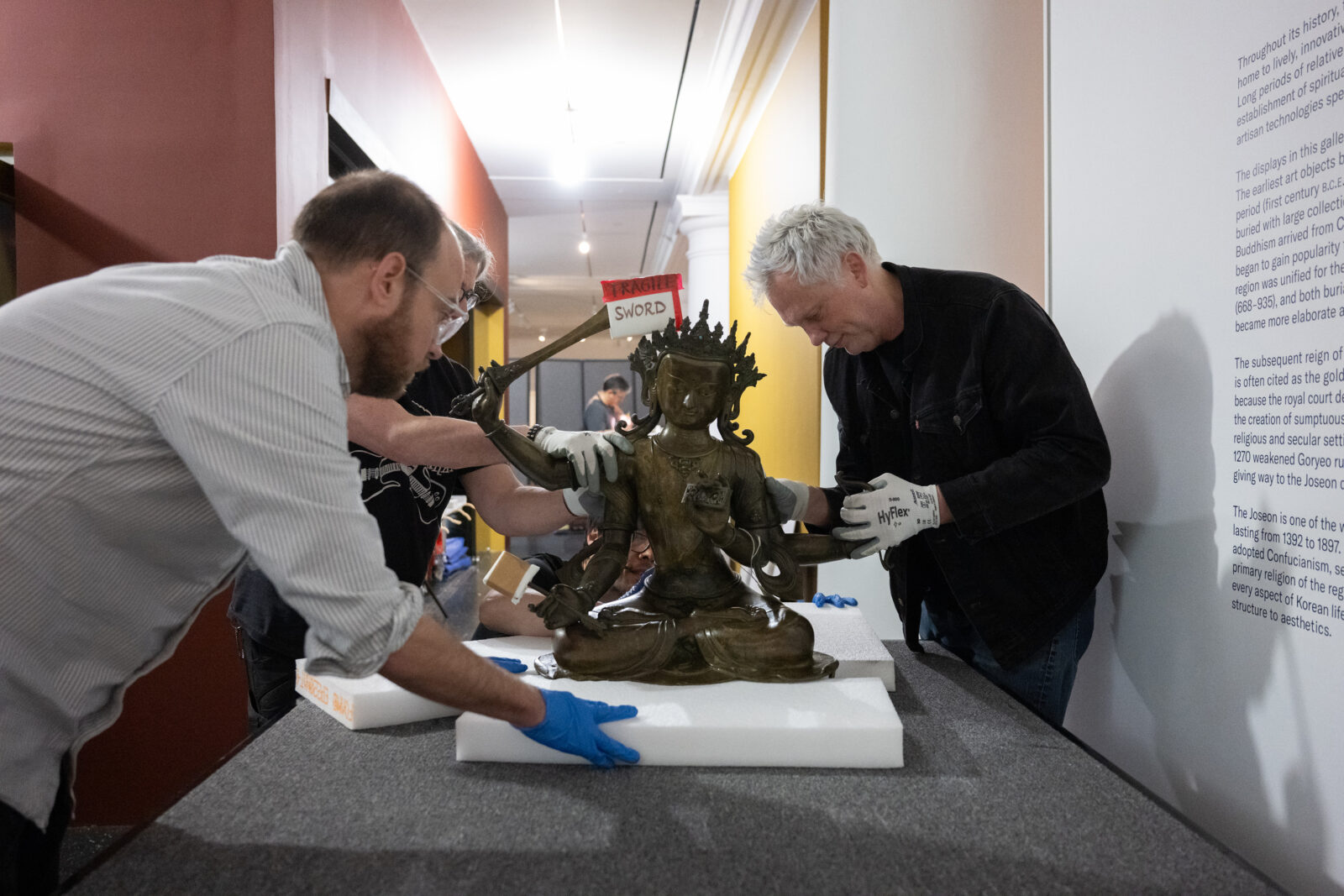
Photo by Filip Wolak
Installing the Shrine Room required careful examination of each object. Holding them one-by-one and looking closely revealed so many details. Each figure has a distinct expression. It also made me realize how many individual objects create the experience of the entire room.
— Kate Wight Tyler, Conservator, Brooklyn Museum
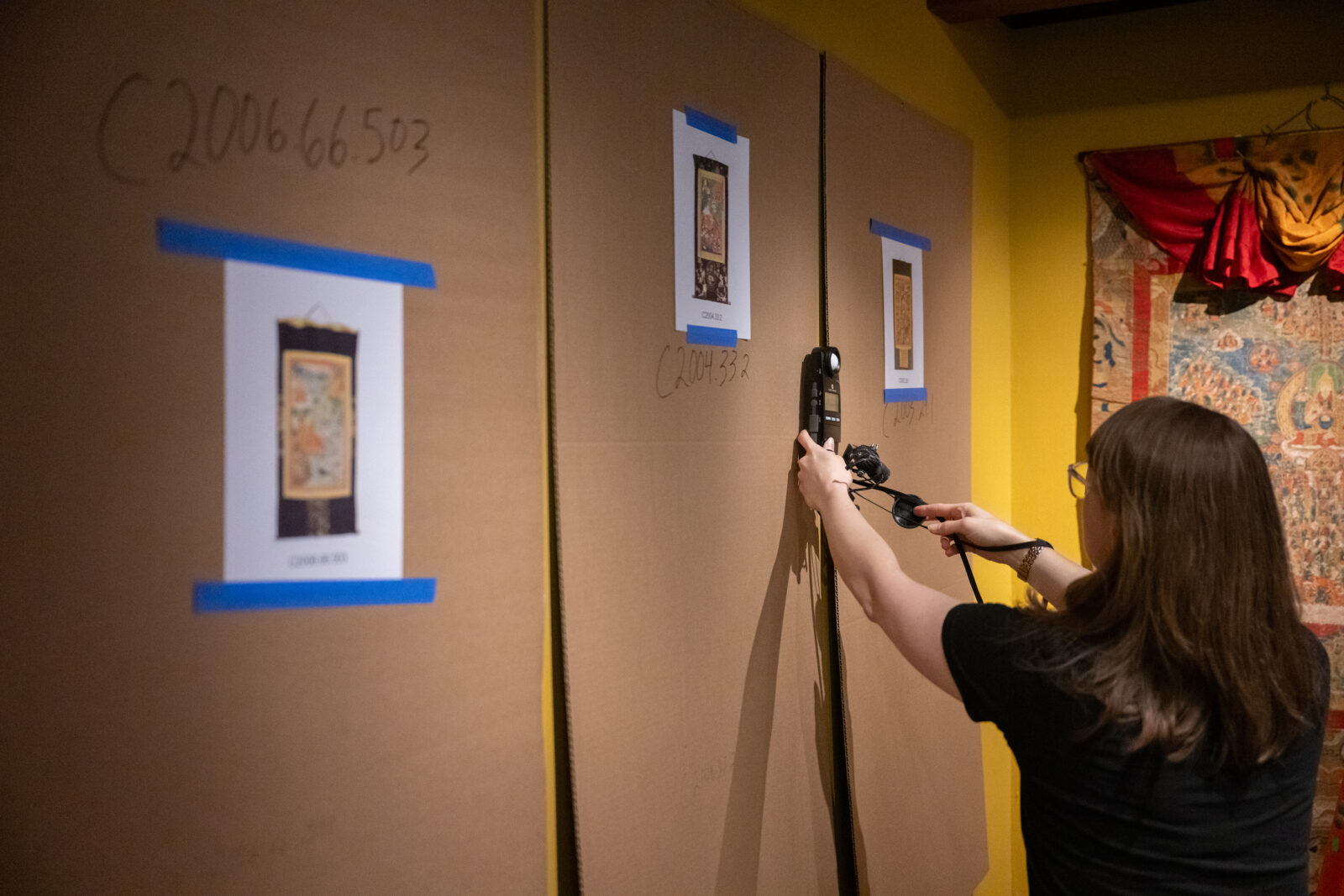
Photo by Filip Wolak
The most rewarding part for me was learning some of the traditions in Buddhist worship. The Rubin curator kindly answered questions I had about the objects we were working with, which enlightened me to the more intricate practices of worship. It made the experience of installing this space educational and intimate. It brought me closer to the project.
— Samantha Cortez, Senior Registrar, Exhibitions and Loans, Brooklyn Museum
The artwork was not alone in its journey across the East River to Brooklyn. Along with the art came the glass doors, the beams, the fixtures—there is a bit of the Rubin in every piece of the installation. Through the process of moving the Shrine Room, I got the chance to know the Rubin itself more deeply, including the accumulated history that lives in the bones of a building.
— Kirstin Clouser, Manager, Global Projects, Rubin Museum of Himalayan Art
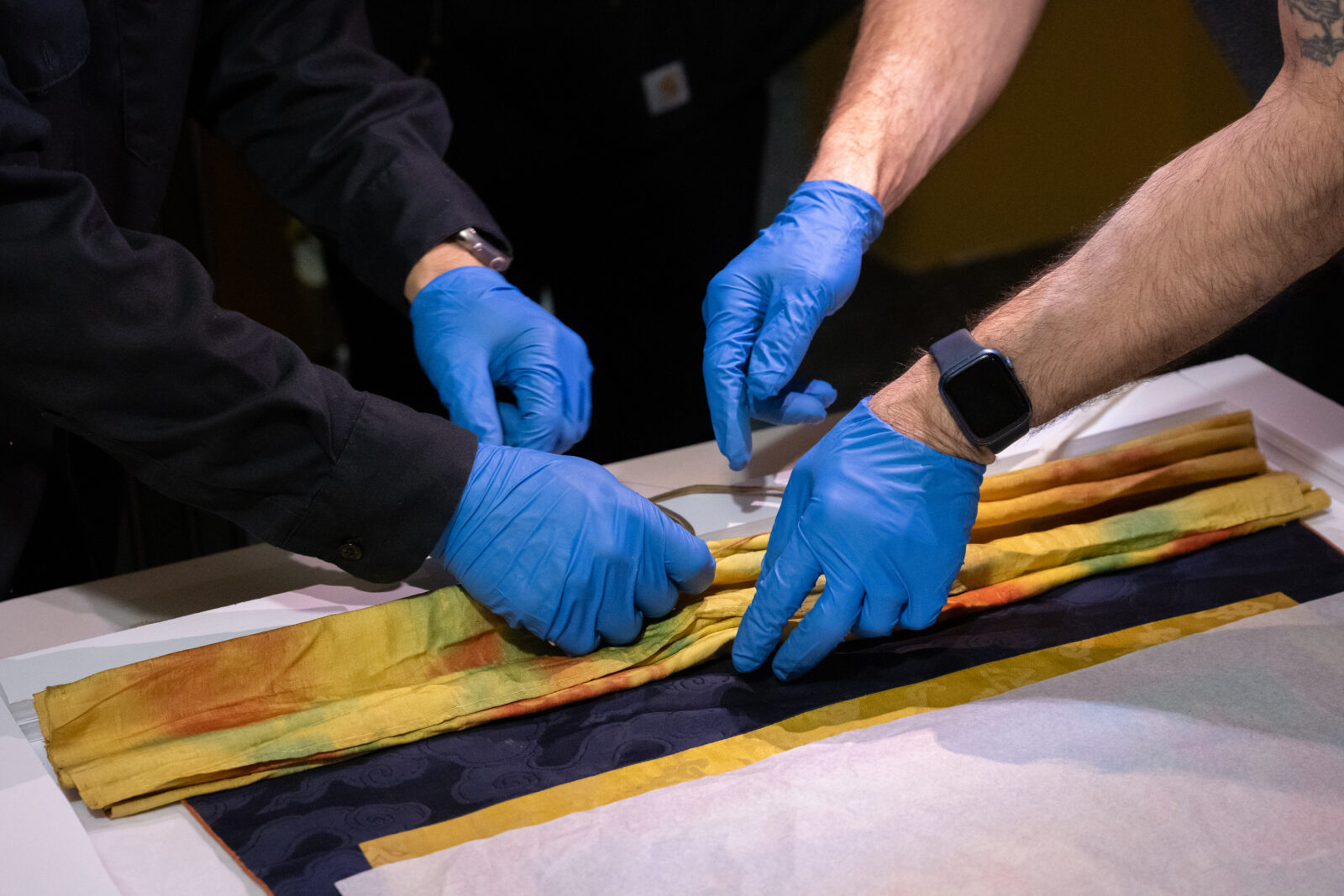
Photo by Filip Wolak
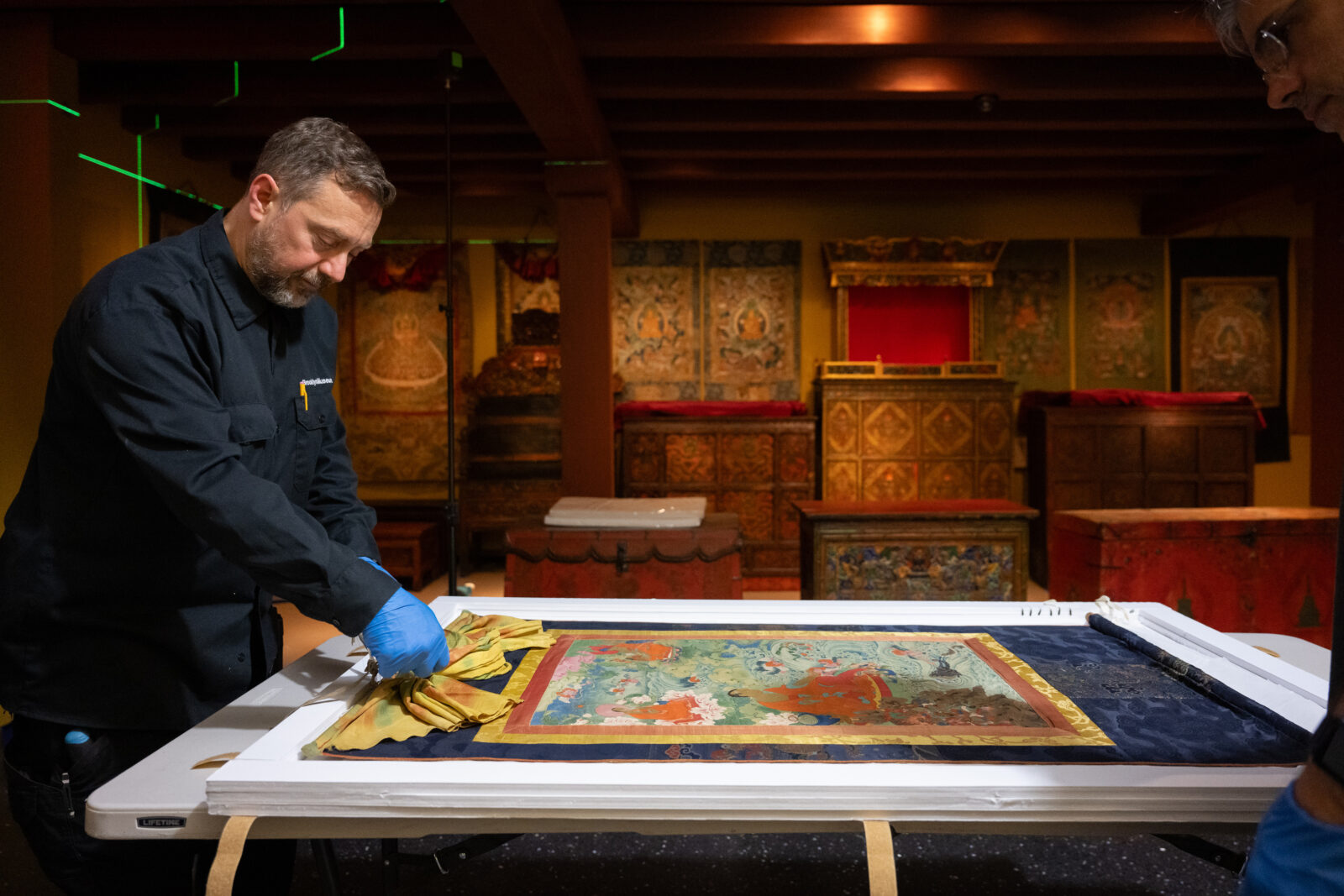
Photo by Filip Wolak
The level of professionalism, flexibility, and patience it takes to accomplish such a unique exhibition was exceeded by the Brooklyn Museum team. The process of unpacking, condition reporting, and installing objects, while complex in scale, went very smoothly. It was a pleasure to coordinate responsibilities in the realization of robust installation that will be extremely beneficial to people in the local community and beyond.
— Jon Lutz, Traveling Exhibitions and Loans Registrar, Rubin Museum of Himalayan Art
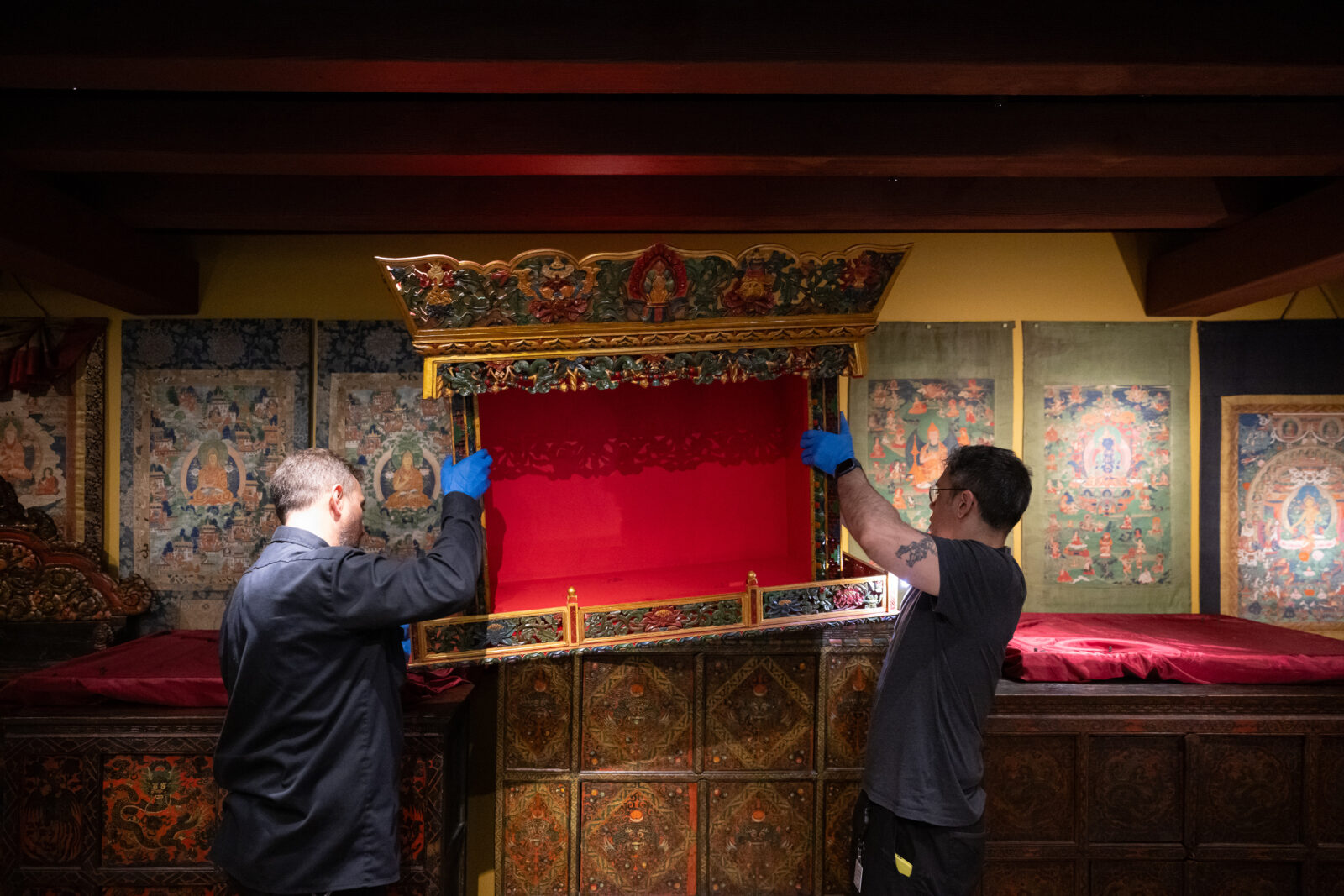
Photo by Filip Wolak
It was refreshing that the process of creating the digital interactive required the use of several analog tools. This included referencing a paper 3D model of the entire Shrine Room, populated with tiny cutouts of each object. Sometimes paper, pencil, scissors, and a printer will get you a lot farther than a spreadsheet!
— Gracie Marotta, Assistant Manager, Editorial and Digital Content, Rubin Museum of Himalayan Art
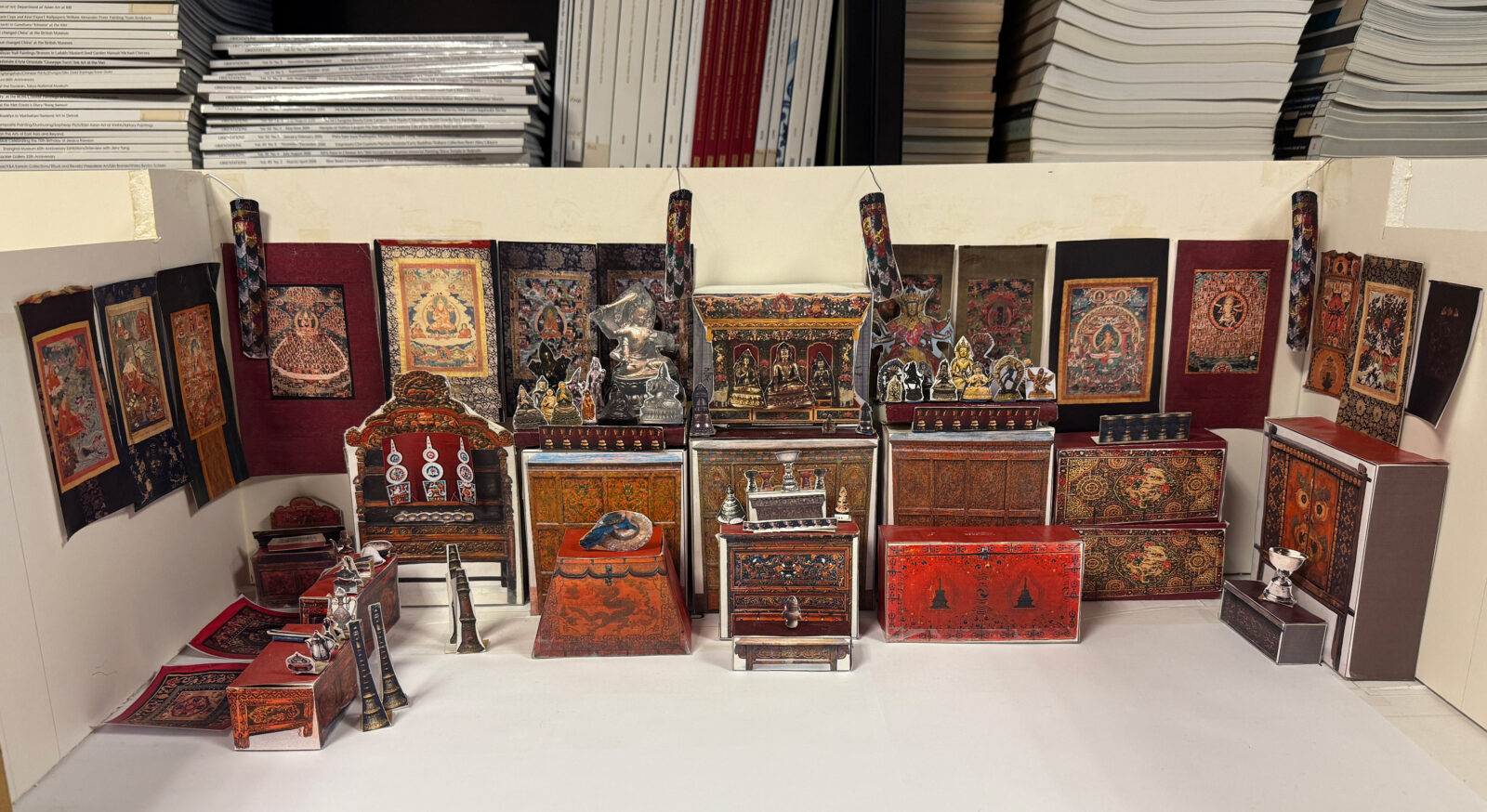
I was especially moved to see how well the installation turned out. We had modeled the Shrine Room (shown above) at a 1:10 scale, carefully selecting, printing, and assembling each object. It was truly an experience of remaking the sacred. Despite the challenges, the process was both fun and fulfilling, and seeing the final result at the Brooklyn Museum was so rewarding.
— Scarlett He, Curatorial Intern, Rubin Museum of Himalayan Art
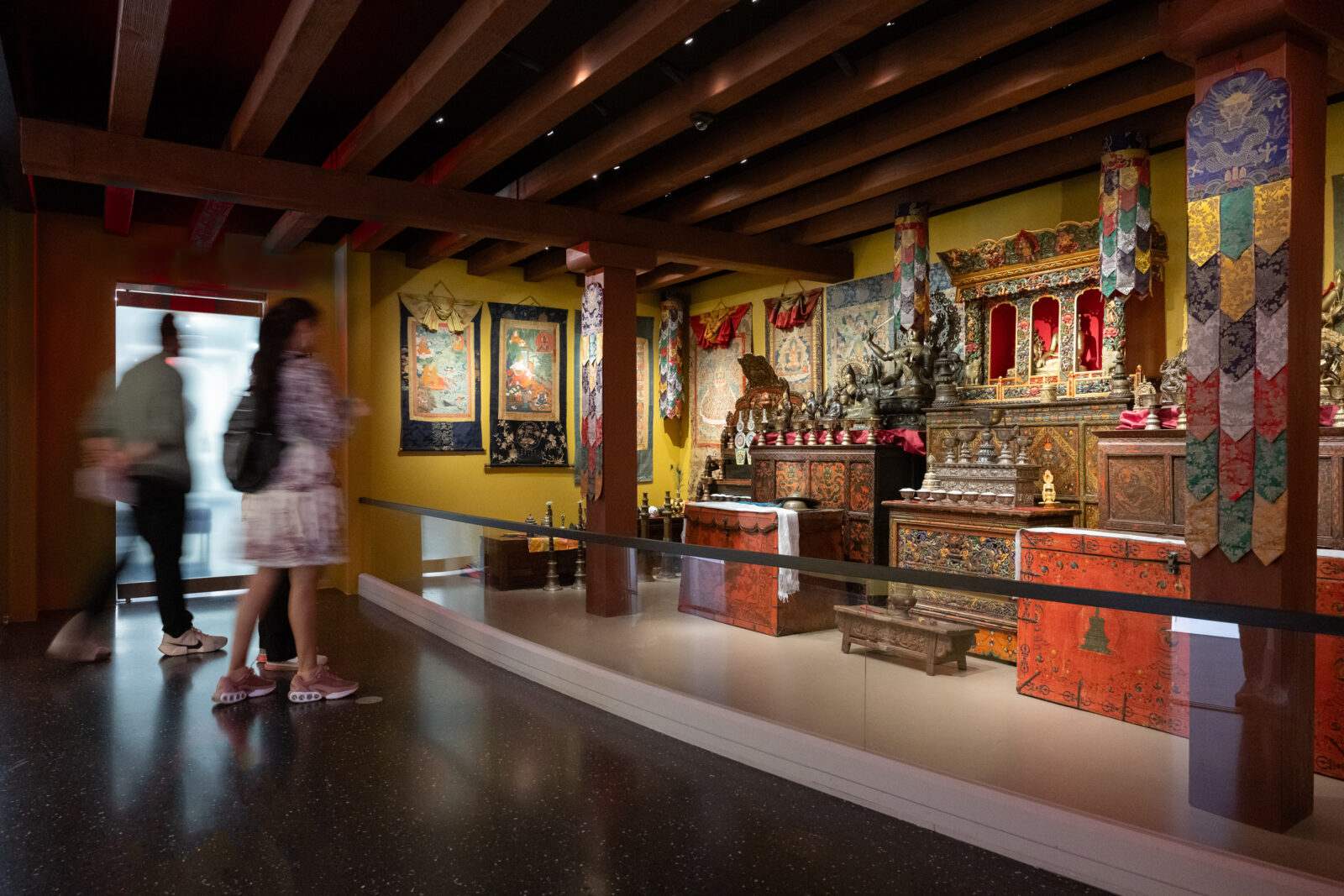
Photo by Filip Wolak
I was surprised and moved by how the gradual installation of the Shrine Room altered the energy of the gallery. As each object was placed, the atmosphere seemed to shift—becoming quieter, more reverent. It was a shared sense of contemplation and attunement, and the display and arrangement process became more than logistical—it felt transformative.
— Laurel Dial, Senior Collections Manager, Rubin Museum of Himalayan Art
The effect of walking into the Shrine Room in Brooklyn is maybe even more dramatic than it was on 17th Street. This beautiful, powerful installation is now surrounded by a noisier museum with lots of white walls and a strong emphasis on things contemporary. If anything, the Shrine Room is even more transporting, even more centering in this new context.
— Joan Cummins, Lisa and Bernard Selz Senior Curator of Asian Art, Brooklyn Museum
Get the latest news and stories from the Rubin, plus occasional information on how to support our work.